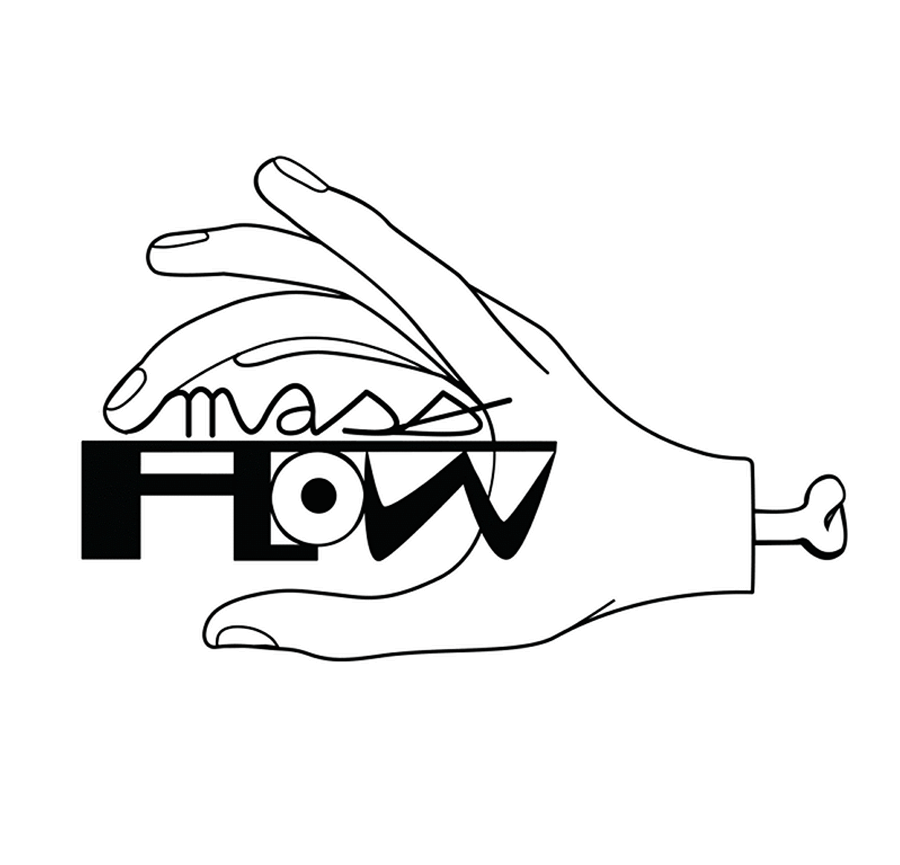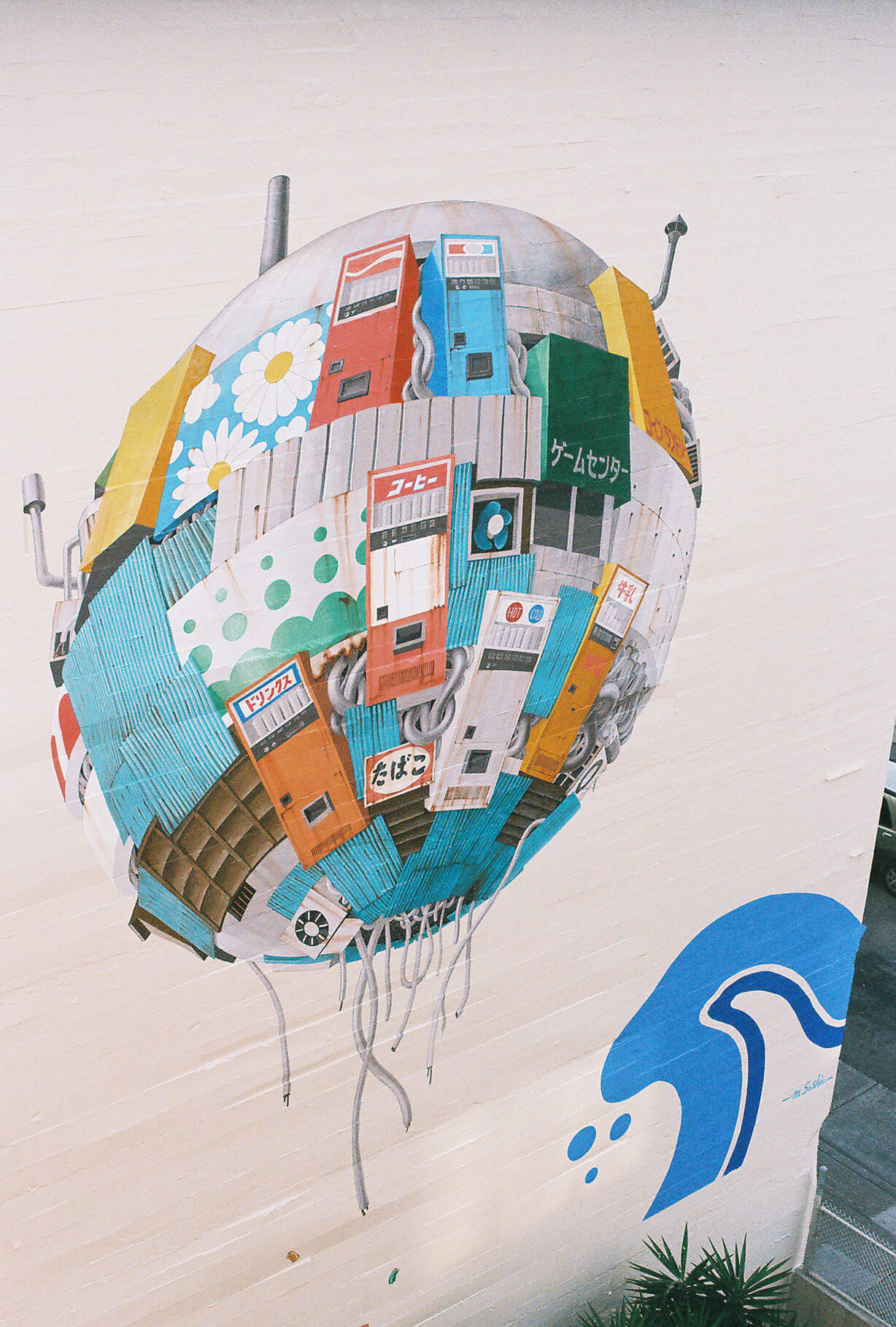SF Mural by Masakatsu Sashie + Interview
We had the pleasure to curate and coordinate this new mural by Masakatsu Sashie. Check it out at 835 Turk St.
Masakatsu Sashie is a master painter from Kanazawa, Japan, who is known for painting hovering orbs set in cityscapes. Sashie is also afraid of heights and has no mural experience of this size. Thankfully his friend Yoskay Yamamoto, who also happens to be a well known painter, came to lend a hand. Interview will be up soon. Here’s the address –> 835 Turk St, right across from the gas station. We asked him several questions upon completion and typed them up with the help of some translators.
Left: Yoskay, Right: Masakatsu, observing their progress before lunchtime
The main subject matter in your paintings are man made objects. The way you depict these objects shows your appreciation for them as well as a criticism towards them. How would you describe this duality in your work?
There always exists two sides, a positive and a negative, to anything in this world. When I create my work, I try to emphasize a flat perspective, and avoid leaning too heavily to any one particular side.
The orbs and landscapes you create have no life forms yet they show signs of life. What is your intention?
Though the scenes in my work show signs of life rather than abandoned ruins, I never show sign of people or other life forms because by doing so it would create distance between the viewer and the work. I would like for the viewer to feel as though they are the life form that should exist in the world depicted.
I read somewhere that the microcosms you create through your orbs are meant to mirror biological systems in which selective absorption is the process that makes them up. How does this apply to society and culture?
The orbs represent the Earth. Earth is, both the largest world-domain that currently exists for humans, and at the same time, merely a tiny spot in the vastness of the universe. I believe that this view of earth is a universal, shared value among us.
Would you describe the style of your work futurist? If not, then is there another category you think your work falls in?
While my works may give off a sense of futurism, I see nature and manufactured objects as equals, so I don’t think my work fits in this category. I don’t think a category that fits currently exists, though it is possible that one may in the near future.
It seems that you bring up other topics in your works such as despair and hope, another pair of dualities. Would you describe yourself as a pessimist or optimist?
It’s difficult to say one way or another as while I lean a bit to the pessimistic side in my thoughts, I can still look at things with an optimistic view, even in a pessimistic situation.
The contrast you create between your orbs and vast landscapes gives the sense that there is something beyond, leaving the viewer craving for more. Aside from keeping your audience captivated, how would you describe this pleasant yet eerie distinction?
Feelings of uneasiness and Hope are things that are greatly influenced by one’s knowledge and experiences. In day to day life, the balance of these feelings are what create a feeling of content. Perhaps it is when my work upsets that balance that the viewer is left with such feelings.
Interviewed/Photographed by Kenji B.
Translated by Adrian Howard





